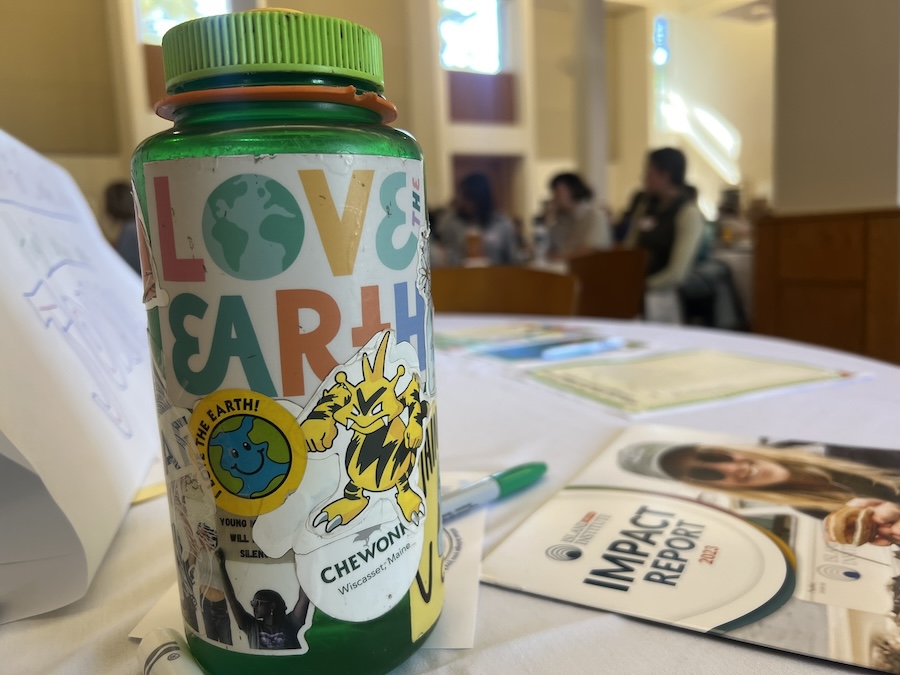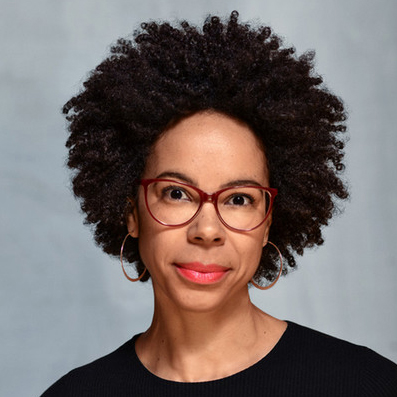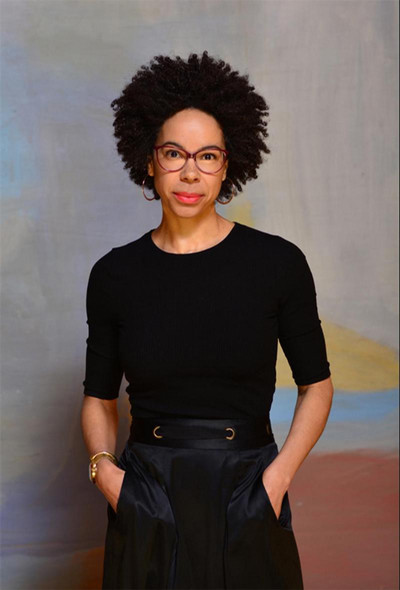Bowdoin Convocation 2022 Cultivating Our Common Natures by Connie Y. Chiang
By Bowdoin NewsThank you, President Rose, for your kind introduction and for the invitation to speak today. I’m humbled to address you, the class of 2026, and my esteemed colleagues.
This year Bowdoin celebrates the 50th anniversary of the Environmental Studies Program. It has the distinction of being among the first ES programs in the country. I’m honored to serve as program director and to sustain the legacy of its founders—Sam Butcher, Chuck Huntington, John McKee, and several others who were committed to preparing students to face the environmental problems at the time. Fifty years ago, the state of Maine’s environment was grim: rivers foaming with industrial waste and beaches covered in litter. Bowdoin’s ES faculty determined that students were best equipped to address environmental problems by embracing an interdisciplinary course of study drawing from the arts, humanities, social sciences, and natural sciences. This ethos continues to animate the program. As alumna Erica Berry ’14 recently explained, ES is “the study of everything…it’s an omnivorous discipline.” Put another way, ES is where the liberal arts converge in their entirety.
For all the expansiveness of environmental studies, however, it may seem surprising, even improbable, that a bespectacled Chinese American woman from California (one of the most diverse states in the U.S.) leads the ES Program at a small college in Maine (one of the nation’s least diverse). I seem to have little in common with the founders of our program: all men, all white. When many people think of environmental studies, they envision affluent white people who like to go backpacking or skiing, kayaking or birding. That assumption reveals an extremely narrow, exclusive vision of the environment and the types of people who care about it. It is also a grossly inaccurate stereotype, both today and in the past. And yet my ES colleagues and I are constantly fighting the perception that caring for and reveling in nature are luxuries for wealthy white Americans. Today, I want to press the case further for cultivating a broader and more inclusive idea of “environment”—one that offers paths toward a more equitable future. Along the way, I also hope to offer some thoughts about your own paths moving forward.
Let me begin with my seemingly improbable path to this stage.
I grew up in Walnut Creek, California, a suburb of San Francisco. My parents—both immigrants—were not really outdoorsy people, although my dad went fishing and rode horses during his college years in Kansas. I didn’t grow up hiking or camping—beyond a couple of Girl Scout trips—and I didn’t regard my hometown as particularly scenic, with its ubiquitous strip malls tied together by ribbons of asphalt. My parents did take my brother and me on a national park road trip when I was seven. I wish I could say that this trip sparked my passion for the environment, but it didn’t. I remember very little beyond the sulfurous smell of Old Faithful in Yellowstone and the endless hours listening to Peter, Paul, and Mary and Jim Croce on the tape deck as we drove along the dusty interstates of the American West.
So where did my interest in the environment come from? Here’s what I do remember: picking the juiciest peaches from my mom’s garden during the summer and slicing them on top of my cereal; spending hours in my backyard, practicing cartwheels or imagining that I was riding in a covered wagon from the Little House on the Prairie books I adored; filling brown paper bags with walnuts from the trees lining the concrete canals behind my neighborhood; marveling at the majestic, gnarled live oak trees that dotted the nearby foothills and watching the slopes turn from green to gold to green again with the seasons. I also remember when those same trees were eaten up by office parks and housing subdivisions over the course of my adolescence. It was the nature next door that offered joy and comfort as a kid. And it was its disappearance that troubled me and sparked my desire to do something to protect it.
I went to college thinking that there was nothing strange about someone like me studying the environment. And no one made me feel otherwise. But in retrospect, my environmental studies courses were full of mostly white classmates, and my professors introduced me to a mostly white cast of characters: Henry David Thoreau describing his terrifying climb up Mt. Katahdin, John Muir extolling the beauty of the Sierra Nevada mountains, Rachel Carson raising alarms about pesticides. Nonetheless, I devoured these authors and decided that I wanted to be an environmental historian so I could learn more about human interactions with the natural world.
Starting in graduate school, I began to look for different people in the archives. And I found them. They didn’t wax poetic about Walden Pond or the granite peaks of Yosemite, but they were still deeply connected to the nature around them. For instance, over this past summer, I read hundreds of pages of testimonies from Japanese Americans who spoke before the Commission on Wartime Relocation and Internment of Civilians in 1981. This bipartisan federal commission investigated the incarceration of over 110,000 people of Japanese ancestry during World War II, one of the most egregious violations of civil liberties in U.S. history. At first glance, this episode seems to have little to do with nature. Yet many witnesses were farmers or the children of farmers who had cultivated land along the Pacific Coast, sometimes for decades, before the war. In their testimonies, they spoke of losing crops, land, equipment, plus years of sweat and toil. But they lost far more. In describing her Yakima Valley farming community in the days before removal, Kara Kondo noted, “Diligently and lovingly they tended the growing things. Perhaps deep down they were saying farewell to the land that nurtured them and the only life they knew.”
Once uprooted, the federal government forced Japanese Americans to live in desolate camps in the inland West and Arkansas, where dusty deserts and muddy swamps were shocking and disorienting. Thomas Hayase, imprisoned in Arizona, remembered “things like the burned cinder-like hills all around, not one sprig of green anywhere, a pall of choking dust everywhere, and the scorching heat that never let up. It was, as one person put it, ‘the nearest place to hell.’” As I read these testimonies, it became evident that the environment served as an instrument for the federal government to assert power over Japanese Americans.
But Japanese Americans did not see themselves as passive victims, and they even derived strength from their new environments, making hellish places habitable. At all the camps, they created stunning gardens that transformed their bleak desert prisons. As Tsuyako Shimizu remembered, “when we entered camp, it was a barren desert. When we left the camp….It was green around the camp with vegetation, flowers, and also with artificial lakes.” Beautifying their surroundings was an act of courage and resistance. So was testifying before the federal commission decades later. Japanese Americans’ connections and responses to the environment compelled them to bear witness and demand restitution. Their desire for justice was inseparable from the environments that both nurtured them and oppressed them.
Reflecting on my own and other people’s environmental histories, then, suggests that my path here isn’t that surprising or improbable after all. Why? Because the environment is not a passive backdrop for human lives. It’s not someplace over there. It’s all around us, an active force that has profoundly shaped us all, past and present—whether we realize it or not. The environment includes majestic places like the national parks, but it also includes swimming pools and city parks, levees and reservoirs, vacant lots and roadside weeds, the air we breathe and the water we drink. For me, it included my suburban backyard. For the Japanese Americans that I study, it included the farms and gardens that they tended, both inside and outside barbed wire fences. These stories expand the definition of “environment” and the people who care about it. They also reveal our mutual values. Indeed, I’ve learned that I have something fundamental in common with the founders of Bowdoin’s ES Program and the Japanese Americans who demanded justice in 1981: we all want access to a clean, healthy, life-sustaining environment for ourselves, our fellow humans, and subsequent generations. For all our differences, we have a collective vision for a more just and sustainable future. We’re all cultivating, in our own ways, our common natures.
I certainly hope that all of you take an ES class during your time at Bowdoin, but even if you don’t, I hope that my story is at least a little instructive. First and foremost, just as my presence here is not surprising or improbable, neither is yours. Even during your darkest moments of self-doubt, don’t forget that you belong here. Second, your path through Bowdoin (and beyond) is not predetermined based on your background or other people’s expectations. You have no set part to look or play. In my teaching and research, I strive to upend and complicate assumptions about what the environment includes and who has meaningful connections to it. I encourage you to do something similar during your time here—defy expectations, challenge assumptions, and avoid putting them on other people, places, courses, and activities, inside or outside the classroom. Explore a range of classes and majors, clubs and excursions. Talk to a variety of people, on campus and off. Nurture your growing sense of self. Along the way, you may cultivate enduring connections with new ideas and people with whom you thought you had nothing in common. You may revel in our shared humanity.
Class of 2026, welcome to Bowdoin. I wish you much joy and fulfillment in the years to come. I’m grateful that our paths have crossed on such a momentous day. May you continue to forge rewarding and stimulating paths, in all the directions they take you.



